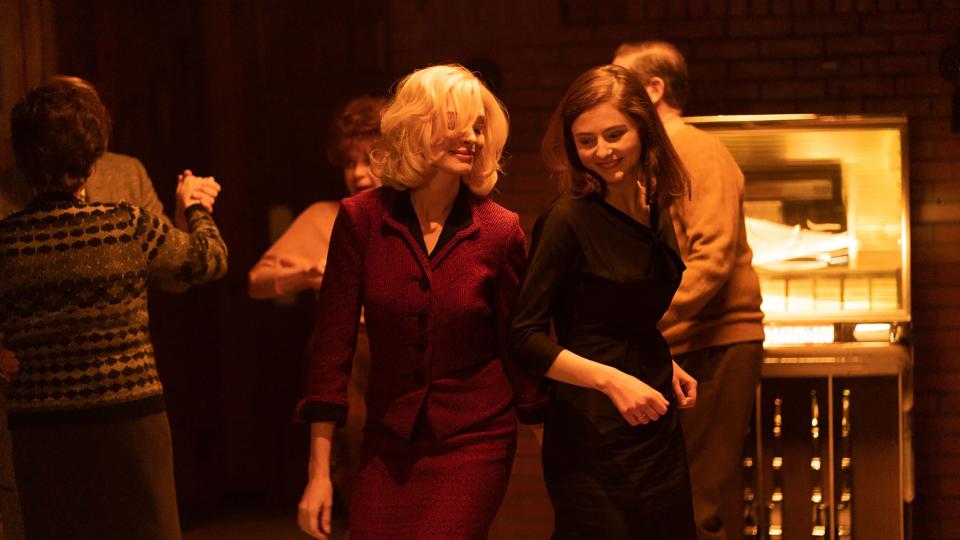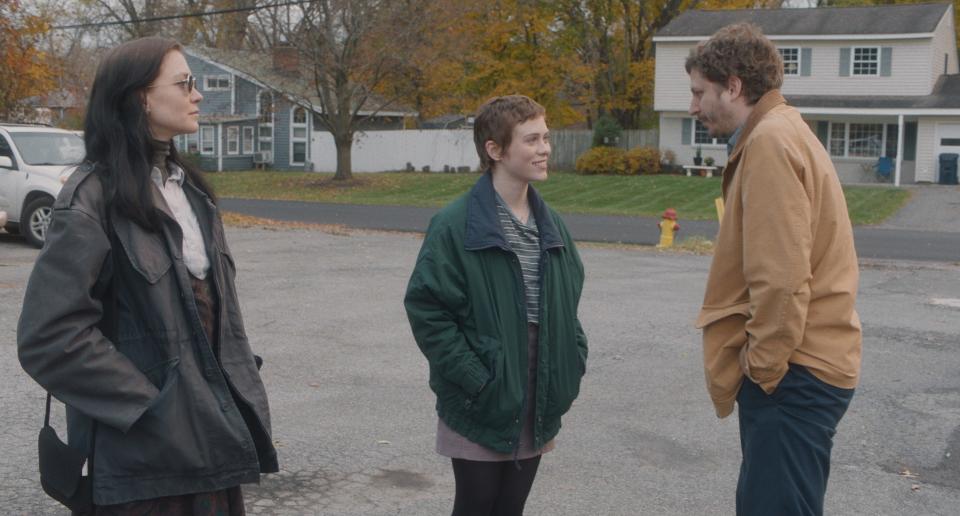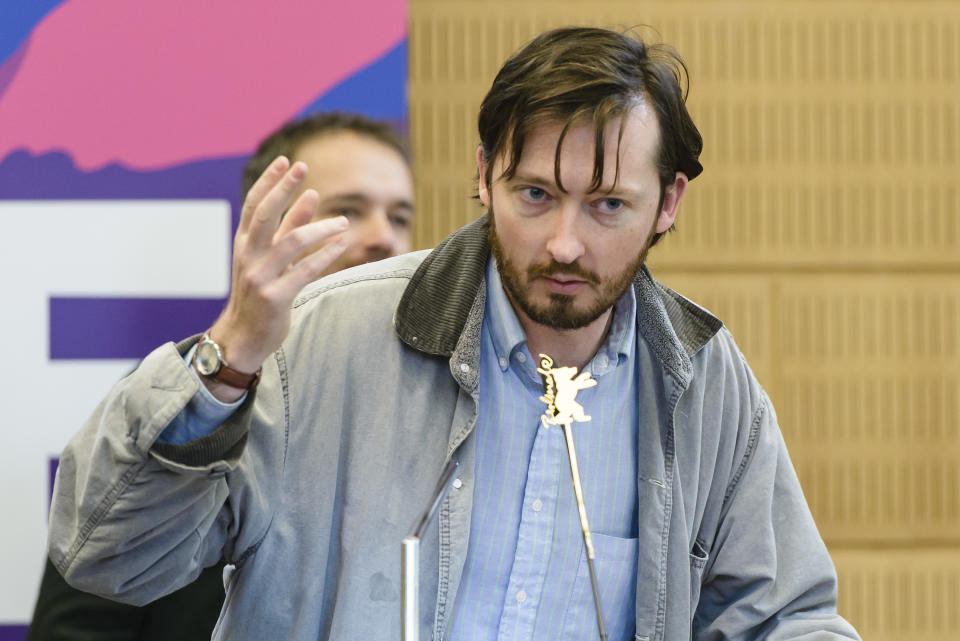The Hidden Hollywood Money Supporting Low-Budget Movies (Column)

- Oops!Something went wrong.Please try again later.
- Oops!Something went wrong.Please try again later.
Sometimes, the gap between new releases and current cinema can look quite wide. For this week’s column, I don’t have a hot take on “Cocaine Bear,” except to say that when movies like this drive so much hype, it sure makes everything else look like a tough sell. Beyond that B-movie opening, this week also marks one month since the Sundance Film Festival, and it shouldn’t come as a surprise that many of the buzziest titles still don’t have distribution.
This might sound like a broken record, but the problem goes well beyond reticent buyers, as the way these movies get made plays an even more critical role in what happens to them. In this case, the slew of Sundance stragglers should be a wakeup call for a smarter approach to making mid-sized American cinema.
More from IndieWire
'The Adults' Review: Michael Cera's Cringe-Out Sibling Drama Is Surprisingly Moving
Sorry, Spielberg: Tom Cruise Didn't Save Hollywood All by Himself (Column)
Part of the current hesitation around Sundance premieres stems from the gulf between outsized production budgets and minimum guarantees. Sure, streamers swept the festival with a few massive vanity deals on movies that have no real theatrical component baked in (around $20 million from Netflix on “Fair Play” and the same figure from Apple for “Flora and Son”). But many other movies that might look on the surface like relatively safe commercial bets remain in limbo.
That includes “Cat Person,” where sales agents have reportedly hovered around a $1.75 million offer from Netflix even though that only accounts for around a quarter of its budget, as well as Randall Park’s Adrian Tomine adaptation “Shortcomings,” which got a prime New Yorker profile for its actor-director this past week even though it has yet to finalize a U.S. deal. Some marketers might have wanted the Park story, which celebrates his investment in Asian American storytelling on both sides of the camera, to materialize closer to the release; in this case, it looks more like a Hail Mary effort to catalyze apparent interest from larger companies wary of the high asking price (budgetary figures on the movie weren’t available).

And then you have “Eileen.” I was riveted by this eerie and immersive period thriller from “Lady Macbeth” director William Oldroyd, which stars Anne Hathaway and Thomasin McKenzie as a pair of women in 1960s Boston who develop an unusual relationship at the prison where they work. With that cast, strong reviews, and its stylish mix of genre elements, the audience appeal might seem obvious: Think Patricia Highsmith by way of “Carol” (it’s actually adapted from Otessa Moshfegh’s first novel). Yet despite the small scale of the movie — two principal characters, only a handful of locations — sources tell me that “Eileen” cost somewhere in the vicinity of a whopping $16 million, a scary figure for any buyer struggling to figure out the best strategy to get movies seen, let alone profitable. Sure, Hathaway doesn’t come cheap and COVID makes everything costlier, but the end result doesn’t make it an attractive prospect.
In light of such problems, it’s hard to follow the buzz out of this year’s Berlin International Film Festival without some measure of dread. If movies with recognizable stars are struggling, non-English language movies that may not be obvious Oscar contenders fare so much worse. Watching Berlinale highlights from New York, I was thrilled by German auteur Christian Petzold’s latest enigma, “Afire,” and left wondering who might be willing to pick it up.
Like a lot of Petzold’s work, “Afire” pits two characters together in an ambiguous relationship ripe for interpretation: Thomas Schubert as a disgruntled aspiring writer at a secluded cabin and Paula Beer (who Petzold worked with on his last movie, the modern fairy tale “Undine”) as the woman who happens to be there and sees through his bullshit.

Berlinale
At first a cringe comedy until it adopts a kind of melancholic poetry in its final act, “Afire” uses its distinct locale of the forest by the Baltic Sea — where a raging fire grows ever closer — to represent its anti-hero’s encroaching narcissism. (To that end, I much prefer the German title, “Red Sky.”) It’s riveting stuff that will certainly make the rounds in the U.S., but don’t expect some massive release strategy beyond the limitations of the arthouse space. “Afire” doesn’t need that because Petzold, like so many European auteurs, pre-sold German distribution rights to his movie, which opens in its homeland in April. No matter what happens beyond that, “Afire” was made without the anxiety of wondering whether anyone would get to see it. (It won the grand jury prize at the festival.)
Many U.S. festival movies don’t have that luxury. Big agencies tend to package projects around the stars they represent, then hold out for the biggest deal possible. You can’t pre-sell international territories when eying a streaming deal since the big streamers almost always want world rights. Agencies can do better in the way they package these projects to better invest in their future. The solution may lie in the art of the negative pickup.
Such deals rarely generate as much attention as big festival buys, but they’re just as crucial a role in the way movies get seen. This is secret studio money that doesn’t receive the same level of appreciation as the blockbusters it pays for upfront. Negative pickups happen when a distributor agrees to release the movie after it has been financed and shot (a “negative” pickup because it’s the studio buying the negatives, so to speak). Hollywood studios make them all the time to save money on production costs —it’s cheaper to have an already finished result and determine the marketing spend accordingly. Also, they have the option of selling it off if it’s a bad fit. A few weeks ago, I wrote about how Paramount acquired “80 for Brady” as a negative pickup after Fifth Season produced and financed it. While Paramount can bask in modest success of marketing the release of a sports comedy aimed at older women, the studio can’t take any credit for making it.
But negative pickups happen for smaller movies, too. One of the highlights out of competition at Berlinale was “The Adults,” the charming sophomore effort from American writer-director Dustin Guy Defa, whose debut “Person to Person” was a sleeper hit at Sundance in 2017. The new movie stars Michael Cera as a gambling addict and habitual liar who returns home to see his two estranged sisters (Hannah Gross and Sophia Lillis) over the course of several awkward days. Cera delivers one of his best performances as a passive-aggressive man-child at odds with the nostalgia for simpler times that he shares with his similarly disillusioned sisters. One might assume, with words “Michael Cera” and “man-child,” the ingredients for some dopey romp.

But Defa doesn’t have the ability to make those kind of movies. In his feature and a slew of shorts, he has cultivated a penchant for sensitive, melancholic stories about wandering introverts. I’ve seen him around the festival circuit for years and get the sense that he’d rather couch surf and beg for change to make microbudgets than take a sloppy paycheck gig. “The Adults” is a quiet slow-burn, more patient and perceptive than most American movies these days; it has a far more international flair to the intelligence of its design, as it builds from an unassuming place to arrive at the emotional catharsis of its finale. I thought of Eric Rohmer movies when I saw it ahead of the festival; later, Defa later told me he was thinking about Maurice Pialat and Hong Sangsoo.
And Universal will release it in the U.S., thanks to a negative pickup it made for the movie last year, on July 3 (with a North American premiere expected out of Tribeca in June). Technically, “The Adults” was acquired by the Universal Content Group. That team, which reports into Focus CEO Peter Kujawski, mostly focuses on international acquisitions for certain titles that already have domestic distribution: Last year, that included A24’s “Pearl,” which Universal released overseas. But it also does straight theatrical deals on smaller titles that they can sell off to other territories internationally as needed.
Producer Jon Read, who helped set up “The Adults” after finishing up production on “Everything Everywhere All at Once,” looked at “The Adults” as the ideal vessel for launching his new production outfit Savage Rose Films that he founded with co-producer Alison Rose Carter. He declined to comment on the final budget but said that it was low seven figures. “It’s a modest budget but it’s the right fit for the film,” he said. “When a big studio gets involved, you want to be more than like the little guy in the room. When you have a project that’s really special and smaller, we spend a lot of time making sure the folks getting into it know what they’re getting into.”

Getty Images
Defa had been toying with making a short film with Cera, who had a supporting role in “Person to Person” and became close friends with the director as a result. (They were part of a poker club during the early days of COVID called “Club Quarantine” that also included Paul Schrader, until he was kicked out.) During the pandemic, he expanded on the idea for the movie into a feature script and initially planned to make it on the fly for no money with a six-person crew. Then Read and Carter got involved with the confidence of “Everything Everywhere” behind them, and realized that through Cera’s casting they could secure a negative pickup with Universal. Having secured a studio-backed distribution plan, the producers were able to secure additional financing.
Still, the arrangement meant that Defa — again, far from what you might call a commercial filmmaker — could experience what it was like to make a studio movie. Universal didn’t make “The Adults,” but it still cared about the end result. “Universal was very supportive and gave very good notes,” said Defa. “But they also trusted us and let us do our thing. We were just making our movie in our bubble.”
Defa said he was taking a “big swing” on his next script, but it was another original idea. He wasn’t ruling out a work-for-hire opportunity, but the kind of gig he envisioned wasn’t your obvious payday. “I have a ‘Sesame Street’ idea that’s really incredible,” he said. Still, he might not have to do anything like that in order to develop within the system. The bad rap that filmmakers get from taking studio dime often ignores the potential to look at the resources floating around in its less obvious corners, where hidden gems like “The Adults” can find all the resources they need to evade the pressure of securing distribution.
Despite what it looks like, “The Adults” actually falls into a genre box that marketers don’t know what to do with these days: the dreaded Drama. Yet it slipped into a studio arrangement that will now benefit from a generous festival response and a long runway to build out its future. More movies would be wise to pursue that trajectory early on.
Of course, we still need the specialty distributors of all sizes — from A24 and Neon to IFC, Magnolia, Kino, Sony Pictures Classics, and Sideshow — to comb through cinema that deserves to get out there even if no major studio would touch it. But all stakeholders in contemporary filmmaking need to consider their end game from the start and consider what outcome makes the most sense. Cinema shouldn’t be reverse-engineered for buyer interest; the entire culture of movies would benefit from figuring out the endgame well in advance of the final product. Otherwise, a whole lot of them will keep dangling in the breeze of uncertainty until the price takes a nosedive.
As usual, I welcome feedback to this column to address the problems it highlights, offer alternate solutions, or…call me an idiot, as long as you can back it up: eric@indiewire.com
Check out earlier columns here.
Best of IndieWire
Sundance 2023 Movie Deals So Far: NEXT Sci-Fi 'Divinity' with Stephen Dorff Lands Worldwide Deal
New Movies: Release Calendar for February 24, Plus Where to Watch the Latest Films
From 'Nymphomaniac' to 'Little Ashes': Unsimulated Sex Scenes in 36 Films
Sign up for Indiewire's Newsletter. For the latest news, follow us on Facebook, Twitter, and Instagram.

